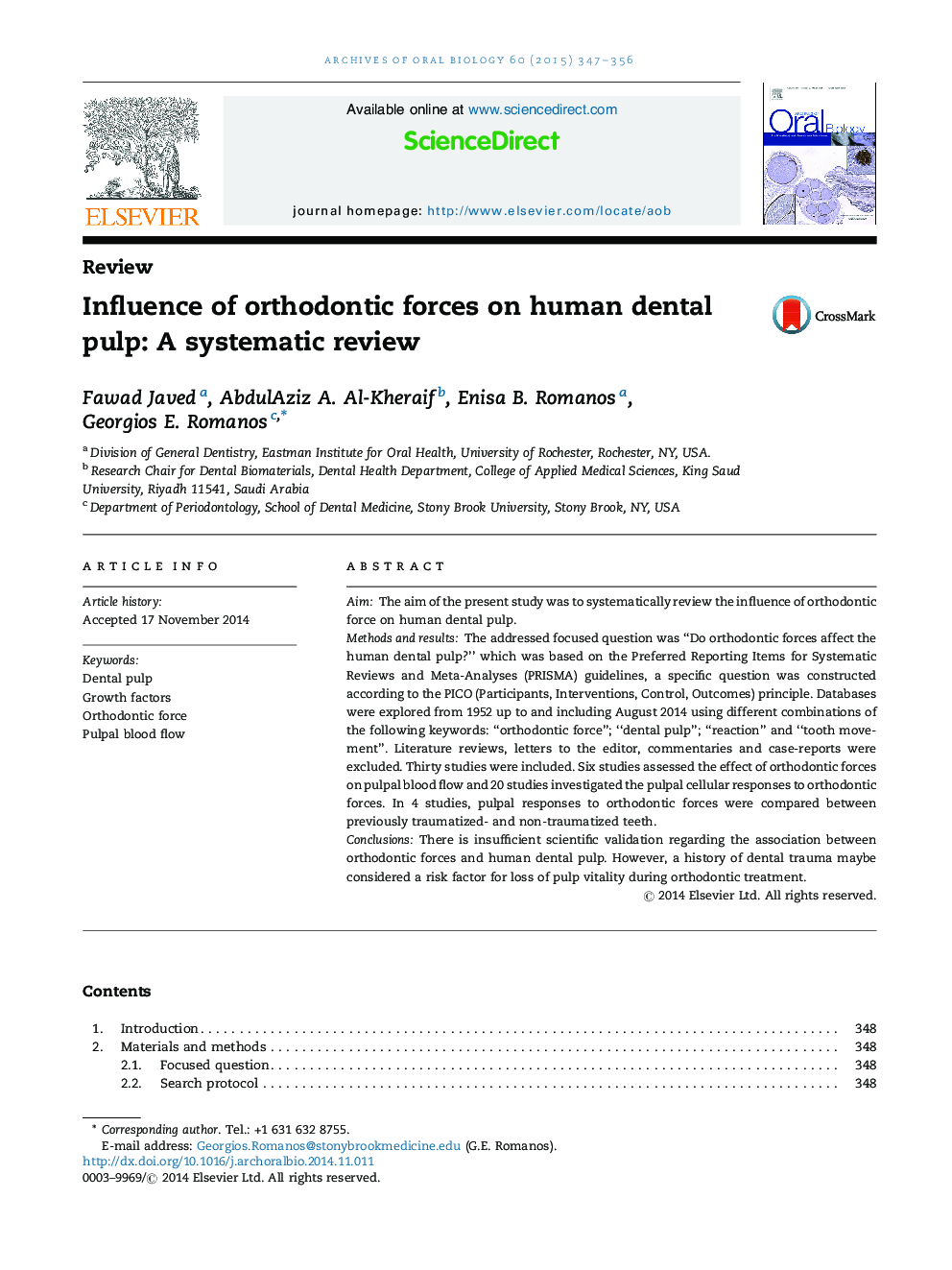| Article ID | Journal | Published Year | Pages | File Type |
|---|---|---|---|---|
| 3120830 | Archives of Oral Biology | 2015 | 10 Pages |
•The aim of the present study was to systematically review the influence of orthodontic tooth movements on human dental pulp.•Orthodontic forces may temporarily reduce pulpal blood flow and cause vacuolization and disruption of osteoblasts in pulpal tissues but without necrosis.•There is insufficient scientific validation regarding the association between orthodontic forces and human pulp.•A history of dental trauma maybe considered a risk factor for loss of pulp vitality during orthodontic treatment.
AimThe aim of the present study was to systematically review the influence of orthodontic force on human dental pulp.Methods and resultsThe addressed focused question was “Do orthodontic forces affect the human dental pulp?” which was based on the Preferred Reporting Items for Systematic Reviews and Meta-Analyses (PRISMA) guidelines, a specific question was constructed according to the PICO (Participants, Interventions, Control, Outcomes) principle. Databases were explored from 1952 up to and including August 2014 using different combinations of the following keywords: “orthodontic force”; “dental pulp”; “reaction” and “tooth movement”. Literature reviews, letters to the editor, commentaries and case-reports were excluded. Thirty studies were included. Six studies assessed the effect of orthodontic forces on pulpal blood flow and 20 studies investigated the pulpal cellular responses to orthodontic forces. In 4 studies, pulpal responses to orthodontic forces were compared between previously traumatized- and non-traumatized teeth.ConclusionsThere is insufficient scientific validation regarding the association between orthodontic forces and human dental pulp. However, a history of dental trauma maybe considered a risk factor for loss of pulp vitality during orthodontic treatment.
